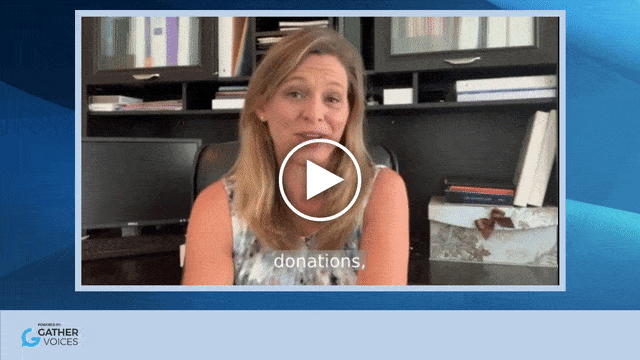An engaged board of directors is essential for a nonprofit organization not only to survive in today’s environment but also to thrive.
If you’re grappling with the following questions, then this article will provide you with tangible takeaways and resources to improve your organization’s governance structure and overall pipeline.
❓How can I make sure I have a pool of qualified candidates ready to join my board?
❓How do I know what governance structure is right for my organization?
❓How can I engage and recruit younger members?
💡Step 1: Review & Strengthen Your Existing Governance Structure
Before you can dig into your governance pipeline, it’s really important to review your existing structure to ensure you have a strong foundation.
✅Ask: “Have you established clear governance roles for your officers, board members, and committees?
While key elements such as term length or term limits should be codified in your by-laws, it’s never too late to ensure you have role descriptions on file for your key people and groups.
Generally speaking, you can distill it like this:
📋Board of Directors – Provides oversight, strategic direction, and financial accountability
📋Committees – Focus on specific areas such finance, fundraising, programs, nominating, and governance. (This is a great topic for a board retreat small-group discussion.)
📋Advisory Boards – Offer expertise without voting power, serving as a talent pipeline (more on this below!).
📋Executive Leadership – Works with the board to execute strategy.
✅Ask: “Do our role descriptions clearly communicate our expectations around board service?”
Key areas include:
📋Required attendance
📋Required involvement in fundraising strategy,
📋Required financial contributions (“give/get” or “give and get”) or “personally significant” contribution
✅Ask: “Have you conducted a board skills matrix?”
In short, a board matrix exercise* (*haven’t done one yet? Here’s a free template!) is a valuable tool for nonprofit boards of directors to ensure that their composition aligns with the organization’s needs, goals, and challenges. It promotes effective governance, strategic planning, and sustainable growth, ultimately contributing to the nonprofit’s overall success and impact.
By way of background, there are several important purposes for this exercise:
👍Assessment of Skills and Expertise: The exercise helps identify the specific skills, knowledge, and expertise that each board member brings to the table — to ensure that the board has well-rounded skill sets that covers areas such as finance, legal, marketing, fundraising, programmatic expertise, governance, and more.
👍Alignment with Strategic Goals: By mapping board members’ skills and attributes to the nonprofit’s strategic goals, the board can assess how well it is positioned to guide the organization towards achieving its mission.
👍Diversity and Inclusion: The matrix exercise highlights the diversity of the board in terms of skills, experiences, backgrounds, and perspectives. A diverse board is better equipped to make informed decisions and drive innovation. This reduces groupthink and fosters more well-rounded discussions.
👍Succession Planning: The exercise facilitates succession planning by identifying potential gaps that may arise when board members’ terms come to an end. It helps in identifying future leaders and ensuring a smooth transition of leadership roles within the board.
✅Ask yourself, “Have you conducted a board self-assessment?”
📋Board Development: The self-assessment (here’s a free template!) assists in identifying areas where board members may need further development or training to enhance their contributions. This supports ongoing board education and growth.
💡Step 2: Laying the Foundation for Your Governance Pipeline
Recruiting strong board and committee members is crucial for a nonprofit’s success. Using your board matrix results, you should have a fairly clear idea of where you have gaps as well as strengths among your current pool of members.
Here are best practices to help you find, engage, and retain the right leaders:
✅Define the Ideal Candidate Profile
- Use your board matrix data to identify the skills, experience, and diversity needed to complement the current board.
- Consider financial acumen, fundraising ability, legal expertise, marketing skills, and/or valuable community connections.
- Prioritize candidates who bring new perspectives and expertise that align with strategic goals.
✅Clearly Communicate Expectations
- Develop a board member job description outlining roles, time commitment, fundraising expectations, and governance duties.
- Be upfront about financial contributions, meeting attendance, and advocacy responsibilities.
✅Tap Into Your *Existing Network* for Referrals
- Encourage current board members, staff, and supporters to recommend candidates.
- Partner with community organizations, business leaders, and universities to find engaged professionals.
- Connect with corporate partners, professional associations, and alumni networks.
✅Tap Into a *Broader Network* by Posting Your Board Opportunities Online
- Here’s three places to consider posting!
- Volunteer Match: https://www.volunteermatch.org/
- From Bored to Board: https://nonprofitexecutives.org/from-bored-2-board/
- BoardStrong: https://boardstrong.org/services/board-matching/
✅Formalize a Vetting & Interview Process
- Screen candidates through an interview process with existing board members (this is often part of a Nominating Committee’s responsibilities).
- Assess mission alignment, leadership experience, and commitment level.
✅Develop a Strong Onboarding Process
- Provide a structured orientation with key documents, financials, and organizational history.
- Assign mentors (or “board buddies”!) to new board members to help them transition smoothly.
💡Step 3: Creating Your Governance Pipeline
Hopefully, by now you have a sense of who you might want to tap to serve on a committee or who might be ready to receive an invitation for your board of directors.
❓But what about how to structure, organize and manage this pool of potential candidates?
The good news is that some board portal solutions — like BellesBoard — offer the ability not only to stack your board and committee rosters over time, but also to enter and track your potential board and committee members by configurable attributes such as skills sets, leadership style and ability to give.
❓And what about engaging younger folks in your organization’s mission and leadership pipeline?
I was recently asked to pen an educational blog for Blackbaud around the importance of engaging Generation Z in your organization — it turns out that laying the groundwork for Gen Z now can make all the difference for your organization’s brand recognition, credibility, and impact down the road.
From a structural standpoint and depending on your organization’s history, goals, and capacity, you have a few possible pipelines to consider for Gen Z and other supporters not quite ready for your Board of Trustees:
⚡Junior Board: Sometimes affectionately known as the “baby board” or Young Professionals Board, formalizing this pathway can pay off. Typically, junior board members personally donate. They raise awareness of the mission while they gain leadership skills by planning and attending events and engaging with the board of directors.
⚡Youth Advisory Board: An advisory board allows for a less structured option to keep ties with younger prospective donors on an episodic basis.
⚡Events Committee (ad hoc): A fun event can often be the perfect introduction to your mission and leadership. The low-hanging fruit segment for this are individuals who served on their university’s student government.
⚡Social Sharer: Gen Z is all about Instagram, Snapchat, TikTok and likely other platforms we haven’t even heard of yet! If your mission, digital marketing expertise, and capacity lends itself to this sort of content creation and remarketing, consider more intentional outreach to this population.
💡Your Takeaways From Steps 1, 2 & 3!☝️
In closing, the work to engage and retain board and committee members is an evolving year-round effort.
It’s critical to provide meaningful involvement beyond board meetings—such as committee work, fundraising, or junior board opportunities — but the structure and approach needs to be based on your organization’s strategic goals and capacity.
In addition, don’t try to do everything all at once. You’re already balancing multiple hats and it is very important to avoid burnout and overwhelm. Rather, my suggestion is to identify an item or two to complete each quarter throughout the year — and let that serve as your Board Development Roadmap. And first, pat yourself on the back for any items you have already completed — after all, there’s a proven psychological benefit to checking items off a list!
In closing, I hope that these suggestions and resources help your nonprofit build a stronger, more engaged, and mission-driven board — along with a healthy pipeline of prospective candidates!
About the Author of this article:

Christine Deska is the President and Co-Founder of Nonprofit Sector Strategies, a public benefit corporation dedicated to helping nonprofits maximize mission impact through strategic planning and board management services. BellesBoard, its signature product, is a board management software solution and mobile app that grows nonprofit boards’ efficiency, engagement and fundraising. Christine has more than 15 years of experience working in and with nonprofit organizations, foundations, and the government.

